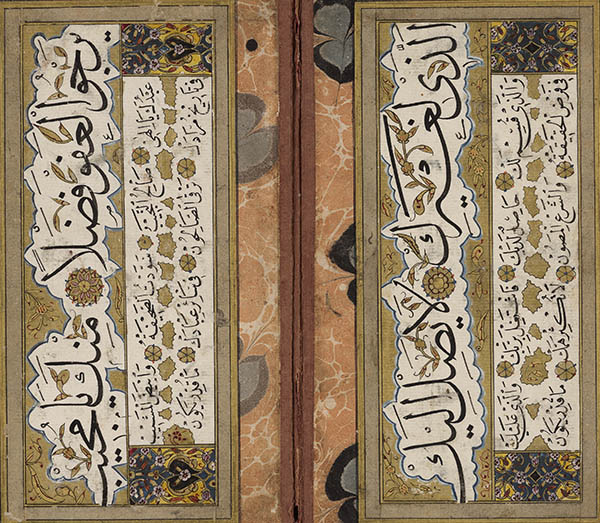Arabic book of sayings
Arabic book of sayings
This 18th century, handwritten book of Arabic sayings is a work of highly artistic calligraphy. Gold-framed tablets have been placed on marbled paper (Turkish: “ebru”) and bound into a codex.
Writing plays an important role in the Islamic world. God’s word is expressed through the Qur’an, the holy scripture of Islam. Because the legitimacy of visual depictions is a hugely controversial issue in Islamic tradition, calligraphy became the established form of artistic representation in the Islamic world. Ornaments are arranged in such a way that they resemble writing and, as such, the written form becomes a source of adornment, providing an ornate visual flourish. It was in the 10th century that the six canonical Islamic calligraphic styles were established. Our example here shows the Thuluth (“sülüs”) script that was used particularly widely in the Ottoman Empire for official and religious purposes.

